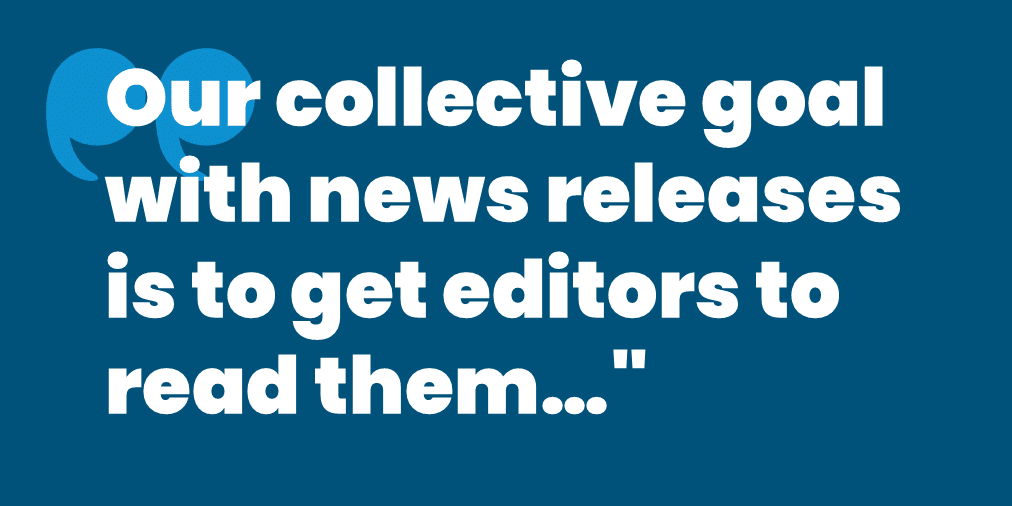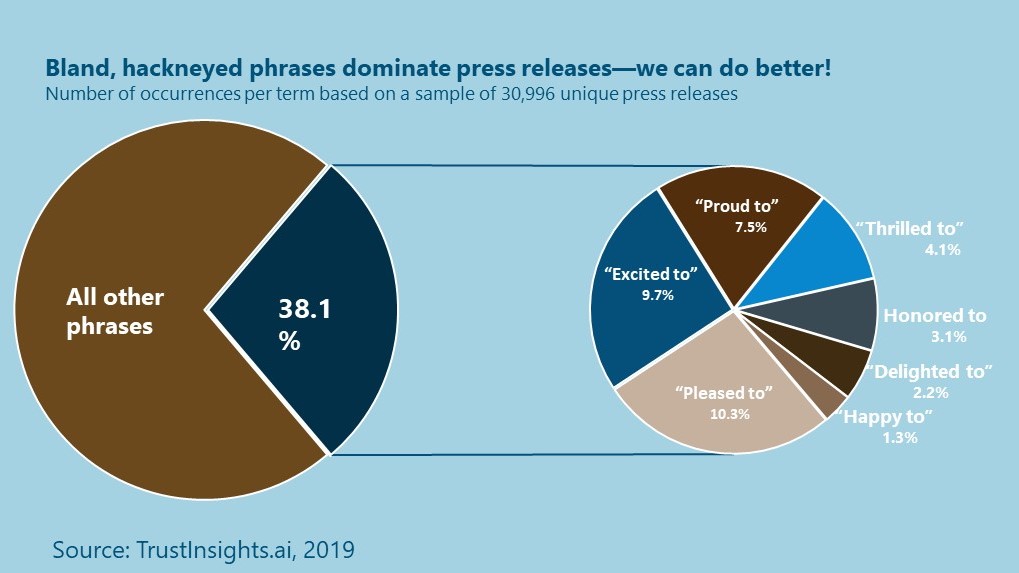
Why’d you do that to our news release?
In the back-and-forth of working with clients to craft press releases, there are a couple of areas of … how to put this delicately … tension … that sometimes come up.
Here, then, are some of the more common questions we get from clients when it comes to news releases and our responses when they ask “Why did you …
… take out the part about it being ‘incredibly innovative’?” We say, look at news releases from major companies and organizations. They all read like a news article—that is to say, they’re written in an objective third-party voice and are free from anything resembling an opinion. (The one place you can—and probably should—drop an opinion is in the quote, since it is in the voice of one of your people.)
… propose cutting the quote from our co-CEO … I’m not sure she’s going to like that!?” We say, what’s the goal here? Is it to stroke egos or to get news coverage? Again, if you look at news releases from major companies, the vast majority quote just one person … sometimes two. Almost never more than that. If you absolutely must give a shoutout to someone else, you can reference them in the quote, e.g.: “I honestly never thought this day would come,” said CEO Cosmo Spacely. “A completely frictionless sprocket is the dream George Jetson and I have been chasing ever since we launched the company back in 2402.”
… change the part about how delighted we are to be announcing this?” We say, unless they’re doing an impression of the late Queen Elizabeth, nobody ever uses “delighted” in a conversation. Yet in a sample of 31,000 press releases analyzed by Trust Insights, the term popped up 687 times (2%). Even more overused: “pleased to” (10.3%), “excited to” (9.7%), “proud to” (7.5%) and “thrilled to” (4.1%). Add “honored to” and “happy to” into the mix, and these bland and hackneyed phrases showed up in a whopping 38.1% of the sample. Not so delightful; we can do better!

… delete the ® symbol we included with every mention of the product? We say, we side with this fellow who vociferously argues that trademarks and service marks won’t ever be found in a news article that follows any of the most common journalism style books and, therefore, they have no place in a news release that purports to be a news article too. He compellingly points to perhaps the most famously zealous trademark guardians, the National Association of REALTORS®, whose own trademark manual says that in deference to AP style, the symbol can be omitted in a news release. We get that it is sometimes wise to choose your battles with the general counsel. But if they insist on using the ®, maybe insert it in the first reference only, which is what the legal guidance is for asserting trademark in your marketing material. And for Funk & Wagnalls’ sake, please don’t put it in the headline!
In the end, it’s your announcement and you get the final say, but it’s worth reminding yourself that our collective goal with news releases is to get editors to read them, take them seriously and either run them as is or use them as the basis for a story. That’s why we write them the way we do when we draft them and why we might politely push back on some of your edits.
Lowe Group offers a range of media relations services. To learn more, send us a note and we’ll follow up with you.
Subscribe.
Receive the latest news and insights from Lowe Group.